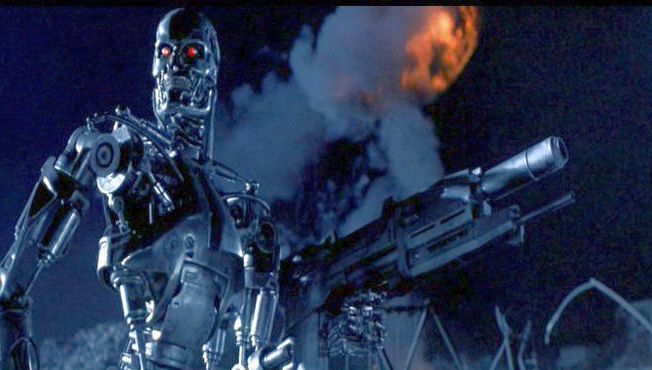

_____________________________________________________
Westinghouse M95A1 / A2 Phased Plasma Rifle
|
|
|
|
MANUFACTURER: |
Westinghouse
Automated Manufactory,
Also available in template form at any Series
III or higher construction facility |
|
PRODUCTION: |
03:02:2015
to 07:04:2029 A.D. |
|
TYPE: |
Heavy
individual fully portable, high gain, very high energy weapon system, high capacity feed |
|
CONSTRUCTION: |
Enduralloy components mated to carbon fiber and moly
fiber carrier, misc. plastics and metals with superconducting filaments. |
|
OPERATION: |
Level IV
magnetic field containment of refined hydrogen fuel excited with thermal
rapid pulse chemical high energy laser ignition system. Caseless fuel / power integration. |
|
BORE
SIZE: |
20mm / 15mm
magnetically stabilized and insulated smoothbore |
|
WEIGHT: |
6.0kg,
unloaded. |
|
DIMENSIONS: |
Length
overall, 1.0 meters (1000mm) |
|
AMMUNITION: |
M48T5
Integrated Fuel Power (IFP) type stacked array containing enough refined
hydrogen core fuel and battery power to initiate and produce 100 plasma
pulses. Later capacity increased to 150 shots with introduction of
M50T5 series high capacity power clip. |
|
FEED
SOURCE: |
100 pulse
capable refined hydrogen fuel cell combined with coaxial high density Type VI
crystal storage array. Later models are fed by 150 pulse capable fuel
cell combo. |
|
RATE OF
FIRE:
|
60 pulses
per minute sustained given cooling cycle and single rate of fire. Unit
capable of select fire in three round bursts or full automatic fire.
Cyclic rate of fire on full auto is 180 pulses per minute. Onboard
diagnostic and safety interface systems prevent weapon overheating by locking
out firing system if core temp rises beyond acceptable levels. |
|
PROJECTILE: |
0.65 Mj phased plasma bolt, flow wash temp at +4500 degrees |
|
MUZZLE
VELOCITY:
|
Staged
hand-off coils accelerate bolt to a velocity of 9000 meters per second
(9.0kps). |
|
|
2000 meters
(bolt integrity destabilizes and cohesion factor approaches .85%
dispersal). Bolt reaches maximum range in 0.22 seconds. |
|
|
1400 meters
(at this point bolt begins to lose cohesion, dispersal factor starts to rise).
Bolt reaches effective range in 0.15 seconds. |
|
PERFORMANCE: |
Contact hit
produces 10mm diameter entry point forming destructive tunneling of target
material through kinetic energy and super thermal contact. Upon
negative penetration or contact with a superior surface, bolt will
destabilize into high speed thermal tributary fragments with a one meter
lethal splash radius. Laser excited, magnetically accelerated 10mm x
1000mm pre-emptive phased conversion thermal bolt will penetrate 10.5cm of case
hardened steel up to effective range with loss of overall penetration
commensurate with range after that. Immediate transfer of
thermo-kinetic energy to soft target tissues and standing fluids rated at
greater than 95% with high speed liquid to vapor thermal expansion.
High duration of residual thermal effects noted in hard surfaces struck by
plasma fire. Explosive displacement of up to one cubic meter of
material may result from bolt impact with material having trapped water or
water vapor inside (porous rock, concrete, masonry, etc.) with lethal spall out to one point five meters from point of
explosive decoupling of material cohesive structure. |
|
DAMAGE
INDEX:
|
Consistent
Damage Index of 180 / 10 representing at effective range the 10mm x 1000mm
bolt will penetrate 180 cm of standard ballistic gelatin with a wound channel
radiating out 10 cm from the point of impact narrowing from that radius in
accordance with depth and tensile strength of target material as the bolt
loses temperature and velocity. This index rating does not take into
account any standing liquids such as water or blood that may be encountered
as such liquids will be instantaneously vaporized thus greatly increasing the
wound channel radius through flash heating causing high velocity steam
expansion and lethal bursting of soft tissues over a large volume of body
area. |
HISTORY-
The M95 series of weapons
were produced by SKYNET exclusively for the ground mobile Endoskeleton
units. The M95 was heavier than either the M-25 series or the M20 series
and as such, it was not a popular weapon with the Resistance (as few humans
could heft and carry the eight kilogram mass of the plasma ejector). The
handgrips were purposely designed more for the Endoskeleton units, thus making
the M95 series even more awkward to use by humans (this last mod in a fit of
growing paranoia that humanity was using SKYNET's own
technology against it, a reality in and of itself). The M95A1 had a
tremendous amount of recoil to it, the A2 series incorporated a prototype
inertial damper which eliminated most of the felt recoil and brought it down to
that of the older M-25 series weapon systems.
The M95 series weapon, of
which the A1 was the first model, was the most effective fully portable plasma
ejectors created during the War. Its abundant cooling reservoir and ample
fuel / power storage gave it great endurance in the field, especially the later
models with their higher capacity fuel / power cells. It was built so that
an Endoskeleton or other unit could carry two and use them at the same
time. Individual weapons could be reloaded in the field by ejecting the
spent power / fuel cartridge and reinserting a fresh cartridge or it could be
docked into a recharging rack (power feed module located at the upper left in
the diagram) for replenishment (an act which took seventy-two and a half
seconds). Later models of SKYNET's heavy HK
units, especially the tracked HKs, carried recessed
charging cradles for these weapons, allowing Endoskeleton units to recharge
their weapons from an allied source in the field. Usually the HK
recharging rack was fully stocked and an Endoskeleton would simply remove a
fully charged M95 series weapon and replace its discharged weapon in the rack.
That way, freshly charged weapons were always at hand for units operating in
the field.
The M95 was a tactical
success in that it gave SKYNET's ground units far
more effective range and a very high damage index from the larger, longer bolt
that the M95 could produce and discharge. Endoskeleton units could now
engage humans at a range that was optimum for their weapons but disadvantageous
for the humans. The introduction of the Mod 3 Base Series 12A liquid
crystal optics upgrade on most T600 and above Endoskeleton models in 2019 A.D.
allowed for precision shots being made at maximum effective range by SKYNET
units possessing both the optic upgrades and the M95 series weapon. The
increased power of the M95 and the increased precision of the optics upgrade
caused the humans to go even deeper into hiding in the ruins, exposing less and
less of their selves to open or free shots and moving from cover to cover with
more effectiveness than before. The explosive decoupling of large amounts
of standing material struck by the plasma bolt removed a great amount of
potential cover from any humans as the bolt was able to punch through walls and
debris piles with little degradation of bolt coherency. The nature of the
larger containment bottle and the increased power of the containment field gave
the M95A1 and A2 series weapons almost twice the effective range of the older M-25
series weapons, a difference that began to make a telling account on the
battlefield soon after the introduction of the new weapons to SKYNET's order of battle.
The M95, along with the
M20-A, remained SKYNET's premiere ground combat
plasma weapons from 2015 A.D. up until 2029 A.D.

T800 combat Endoskeleton carrying M95A1 phased plasma rifle.

All post Series 600 Endoskeletons were
equipped with dual independently
operating target acquisition processors which allowed them to wield dual
weapons with inhuman precision and machine-like ambidextrous ease
_______________________________________